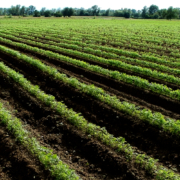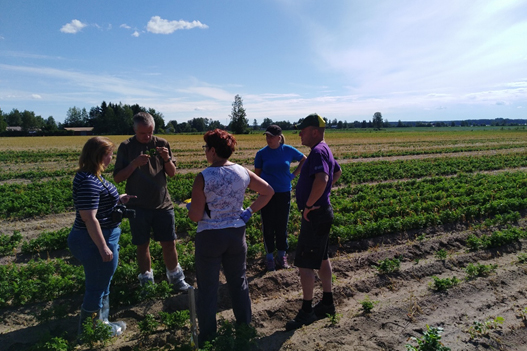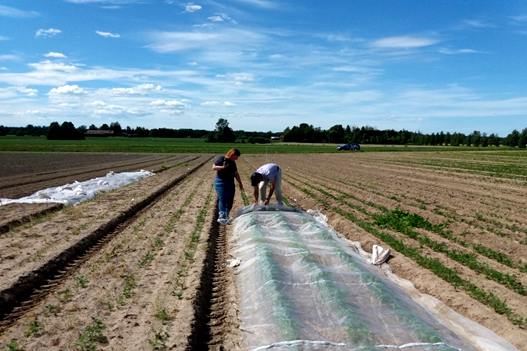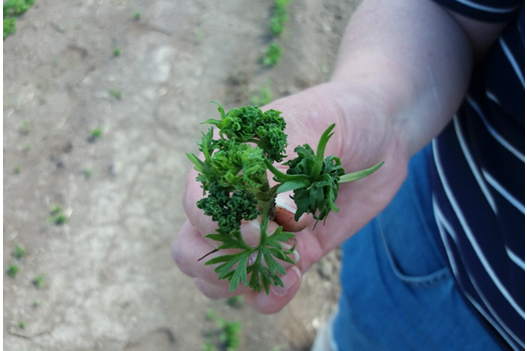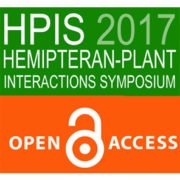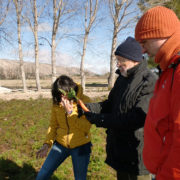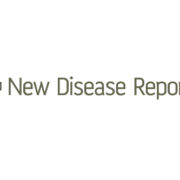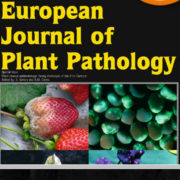Landscape epidemiology of CaLsol in Finland, keeping one foot in the furrow
From 9 to 12 July 2018, Antonio Vicent (IVIA) and Wopke van der Werf (WUR) visited Anne Nissinen and her colleagues at LUKE in Jokioinen, Finland in a collaboration between WP8 (risk assessment) and WP9 (integrated disease management) within the PonTE project. The purpose of the get-together was to discuss methods and approaches for analysing the landscape epidemiology and economic impact of CaLsol (Candidatus Liberibacter solanacearum).
They visited several affected carrot fields near Jokioinen in the province of Tavastia Proper and near Säkylä in the province of Satakunta. During the visits, POnTE researchers directly interacted with growers and farm advisors to discuss the impacts of the disease, CaLsol and its vector Trioza apicalis in the fields, which, in addition to the psyllid attack, have suffered from severe drought this year. The different management practices for the vector and the disease were discussed vividly as well.
Researchers also visited the field experiments conducted by LUKE to evaluate insect netting to control the vector. These extensive field visits helped risk modellers to identify potential variables that would be incorporated into a model predicting landscape factors contributing to CaLsol prevalence in carrots. This model would allow devising proper disease management strategies at the regional level.
Furthermore, during the visit, POnTE researchers discussed how to perform a stratified assessment of the economic impact of CaLsol at the European level.
Discussion in the carrot field
LUKE investigates the efficacy of insect-proof netting to control Trioza apicalis, the vector of CaLsol
Severe leaf curling symptoms on carrot due to feeding by Trioza apicalis

